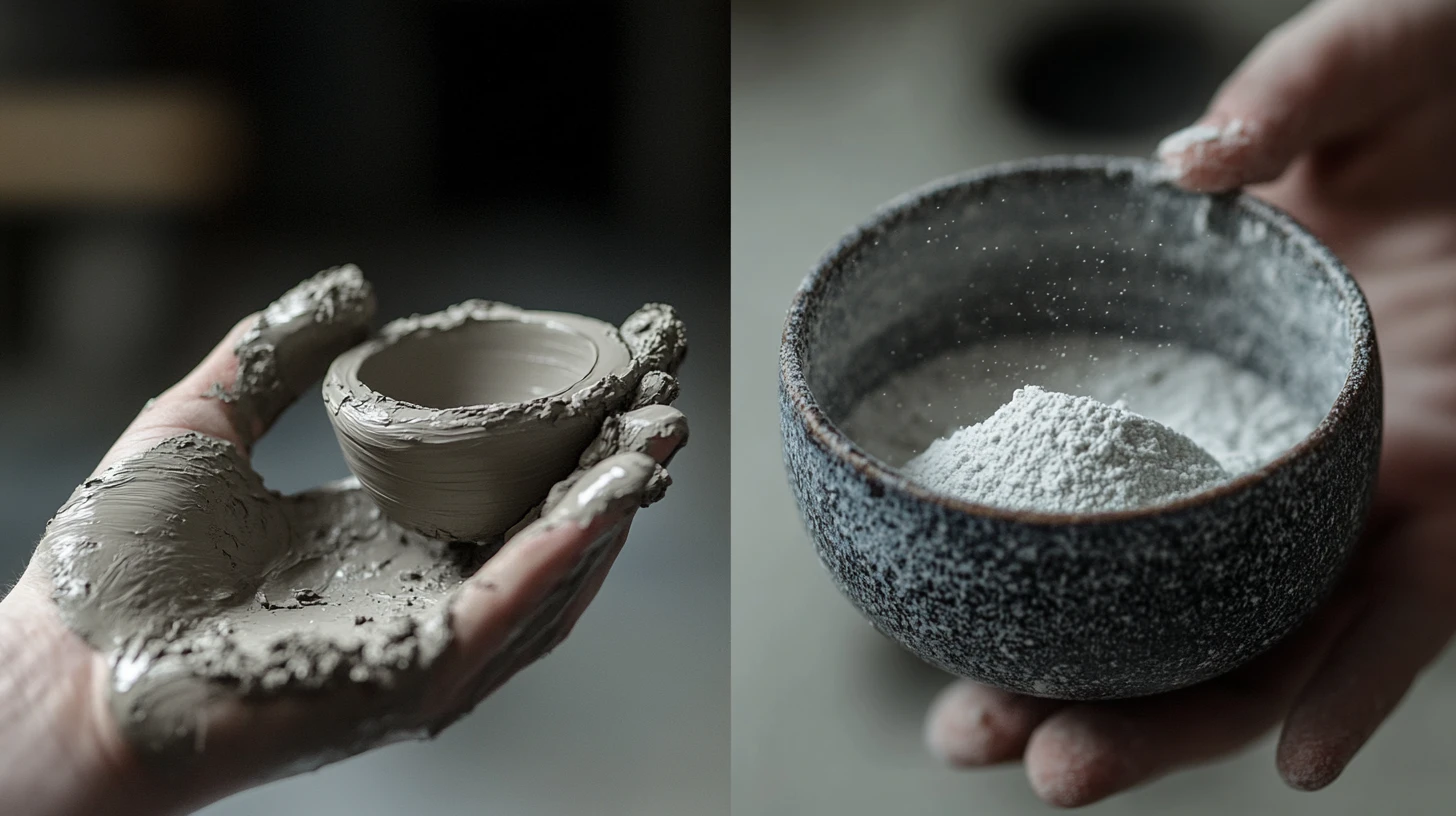![[Ceramics & Porcelain] – What’s the Difference? A Guide to Distinguishing Everyday Tableware & Appreciating Its Deep Appeal](https://images.microcms-assets.io/assets/1775a3633c8b428d9f011c6a758a8a5c/83b3d22ff5fd4fc986c6a600e52c8092/u6579618523_A_rustic_earthy-toned_pottery_vessel_next_to_a_sm_59c32639-14ff-4328-ba6f-6208e3ae223c_0.png?w=1500&fm=webp)
Distinct Identities Born from “Earth” & “Stone”
The most fundamental difference between ceramics and porcelain lies in their raw materials. Simply put, ceramics are made from clay, while porcelain is made from stone. This difference at the very beginning of the process defines their respective properties.
Ceramics are primarily made from a clay called Todo, which is dug from mountains or hills and contains natural elements like iron. This imparts a unique warmth and organic texture to the final product. Artisans learn to read the qualities of the local clay and draw out its beauty through skilled craftsmanship. After firing, tiny gaps remain between the clay particles, making ceramics porous and absorbent—qualities that contribute to the pleasure of watching ceramic ware “mature” over time. Their comforting, earthy feel stems from being quite literally born of the earth.
Porcelain, on the other hand, is made from finely crushed rock called Toseki, often blended with materials like feldspar and silica. Unlike ceramics, which use natural clay, porcelain uses refined stone powder. When fired at high temperatures, the glassy components in the mixture melt and fill the gaps between particles, resulting in a dense, hard surface that is virtually non-absorbent. The white, smooth surface speaks to its stone-like hardness and elegance.
Understanding whether an item was made from clay or stone gives a meaningful context for all the differences discussed below.

This article is for members only.
Please register to read the rest of the article.
- Read members-only articles
and use text-to-speech. - Unlimited article favourites
and browsing history. - Attend members-only events.
- Get the latest information
with our email newsletter.

.png?w=400&fm=webp)

![[No.4]The Secret to the Expressive Techniques Only Living National Treasure Akihiro Maeta Can Create](https://images.microcms-assets.io/assets/1775a3633c8b428d9f011c6a758a8a5c/9c7bdfdde79840788867596b54617615/OGP4.JPG?w=400&fm=webp)

